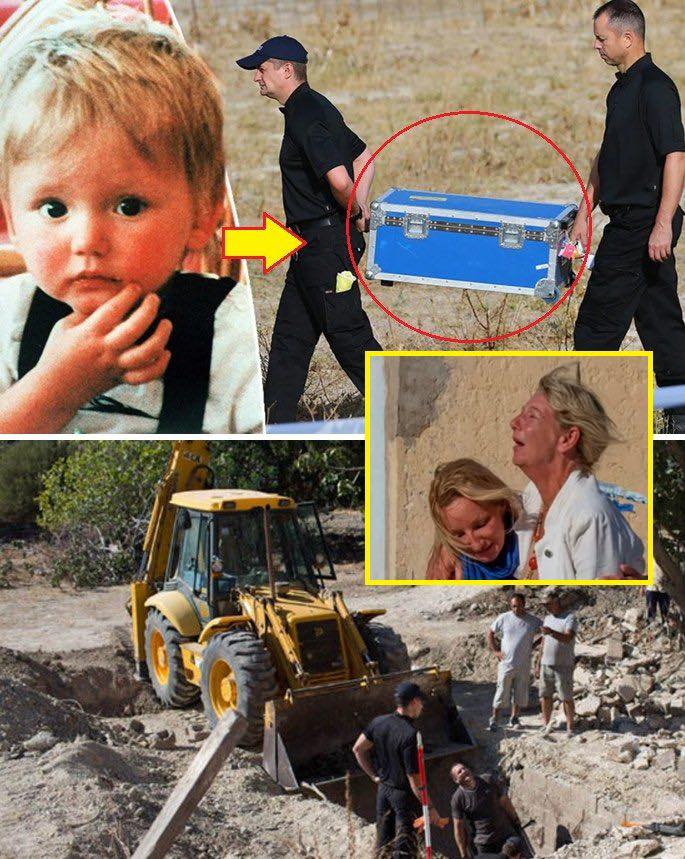In a nation that often measures its heroes by quiet dedication rather than grand gestures, the story of two U.S. Navy aviators — Lt. Cmdr. Lyndsay P. Evans and Lt. Serena N. Wileman — has touched hearts far beyond the flight lines of Washington State. What began as a routine training mission ended in heartbreak near Mount Rainier, but their lives and legacy continue to echo through every base, every squadron, and every aspiring aviator who dreams of taking to the skies.
This is not just a story about loss — it is a story about service, excellence, leadership, and the unbreakable bond between those who choose to defend the skies.
A Mission That Ended Too Soon
Late on a crisp Friday morning, the quiet expanse of forest east of Mount Rainier became the focus of an urgent search operation. The Navy’s EA-18G Growler — a $67 million electronic warfare jet renowned for its sophistication — had disappeared from radar. The aircraft, part of a routine low-altitude training flight, was operated by two of the Navy’s finest officers assigned to Electronic Attack Squadron 130 (VAQ-130), affectionately known as the “Zappers,” based at Naval Air Station Whidbey Island.
When communication was lost, the response was immediate. Navy aircraft, National Park Service rangers, and local law enforcement began scouring the rugged terrain. For nearly twenty-four hours, hope drove every searcher forward. The following afternoon, however, the search ended in solemn silence as the wreckage was found amid snow-dusted slopes roughly 6,000 feet above sea level.
By Sunday, the Navy confirmed what many had feared: both aviators had lost their lives. In a statement heavy with emotion, Cmdr. Timothy Warburton, commanding officer of the Zappers, said, “It is with a heavy heart that we announce the loss of two cherished members of our family. Our focus now is on supporting their loved ones, our sailors, and the Growler community as we mourn the passing of two extraordinary warriors and friends.”
The Growler: A Symbol of Precision and Power
The EA-18G Growler is among the most advanced aircraft in the world. Adapted from the F/A-18 Super Hornet, it serves a vital role in modern warfare — electronic attack and protection. Its mission is not to destroy, but to shield: it jams enemy radar, disrupts communications, and ensures the safety of other aircraft and personnel during operations. The Growler’s precision technology and versatility make it an indispensable tool in U.S. defense strategy.
Because of its impressive safety record and engineering reliability, the crash raised difficult questions for investigators. “This aircraft has one of the best records in naval aviation,” said retired Cmdr. Rick Benson, a former Navy pilot. “For it to go down suddenly, without distress calls, means something catastrophic occurred — but we must trust the process to uncover what that was.”
The Naval Safety Center and the National Transportation Safety Board (NTSB) have since launched a comprehensive investigation, working with local agencies to identify what went wrong. Early reports suggest that determining the cause could take several months. Investigators will consider weather, terrain, mechanical systems, and human factors — leaving no variable unexamined.
In the meantime, Washington Governor Jay Inslee authorized the National Guard to help secure the site, prioritizing both safety and environmental protection. “Our hearts are with the families and the entire Navy community,” Inslee said. “Their dedication and sacrifice remind us of the true meaning of service.”
The Women Behind the Wings
Lt. Cmdr. Lyndsay P. Evans: A Trailblazer in the Skies
At just 31 years old, Lt. Cmdr. Lyndsay Evans had already built a record that spoke of talent, integrity, and courage. As a Naval Flight Officer, she played a key role in electronic warfare operations, helping ensure mission success and the safety of countless aircrews. But her influence extended far beyond the cockpit.
Evans made national headlines in 2023 when she joined the first all-female flyover at Super Bowl LVII, celebrating fifty years since women first became U.S. Navy aviators. The moment was symbolic — a generation of women who once faced barriers to the skies now soared above a stadium filled with millions of spectators. For Evans, it was not about fame but about representation. “She was proud to show what teamwork and dedication could achieve,” a fellow aviator recalled.
Her colleagues described her as “the calm in the storm” — steady under pressure, thoughtful in leadership, and endlessly generous with her time. She often mentored younger sailors, guiding them through the demanding world of aviation with patience and empathy. “She believed in the power of quiet confidence,” one of her squadron peers shared. “Her leadership wasn’t about commanding attention — it was about earning respect.”
Evans’s achievements made her not only a role model but also a pioneer who helped pave the way for future generations of women in naval aviation.
Lt. Serena N. Wileman: Dedication in Every Flight
Lt. Serena Wileman, also 31, shared a similar devotion to excellence. Commissioned in 2018, she joined the Zappers three years later after completing one of the Navy’s most rigorous flight training programs. Her reputation was built on precision, discipline, and composure. Whether in the air or on the ground, she carried herself with professionalism that inspired those around her.
Her list of honors included the Navy Unit Commendation Medal and the Combat Action Ribbon, but her family said she valued the teamwork and camaraderie behind those achievements even more. “She loved her country, her squadron, and the people she served beside,” her father wrote in a heartfelt statement. “She lived with purpose and flew with passion.”
Wileman was also known for volunteering her time to mentor aspiring aviators, especially young women interested in STEM and aviation careers. She visited schools, spoke to youth groups, and reminded students that courage often begins with curiosity. “She wanted every young person to believe their dreams were worth chasing,” said a teacher who hosted one of her talks. “She made aviation feel within reach.”
A Navy Family in Mourning
At Naval Air Station Whidbey Island, the sense of loss is profound. The base is home to thousands of service members, yet it operates more like an extended family — bound by shared purpose and mutual respect. When tragedy strikes, the entire community feels it.
Hundreds gathered for a candlelight vigil outside the main gates of the base. Sailors, veterans, families, and local residents stood side by side in the cool evening air, holding candles and small model aircraft as tributes. Some left handwritten notes; others simply stood in silence, united by grief and gratitude. “They represented the best of who we are,” one sailor said softly. “Every time we take off, we carry them with us.”
Messages of condolence poured in from across the nation. Senator Patty Murray, who had met Evans during a visit to the base, described her as “a pioneering leader whose courage inspired countless others.” She added that both women “represented the highest ideals of the Navy — dedication, honor, and service above self.”
The Navy’s Chief of Naval Operations, Adm. Lisa Franchetti, also released a statement: “We mourn the loss of two outstanding officers who exemplified professionalism, excellence, and integrity. Their legacy will endure in every aviator who continues their mission.”
Beyond the Uniform: The Legacy of Service
For those who knew Evans and Wileman, their story extends far beyond their military titles. Both women believed that service was about connection — to their squadron, their families, and the nation they swore to defend. They understood that leadership is not about hierarchy but about example.
Evans once said during a mentorship event that “every pilot flies for something greater than themselves.” Her words now carry a deeper resonance. She and Wileman embodied that truth — pushing boundaries, uplifting others, and exemplifying resilience in the face of challenge.
Their presence in the Navy also marked a cultural evolution. A generation ago, women in combat aviation were rare. Today, thanks to pioneers like Evans and Wileman, the skies are open to anyone with the talent and determination to earn their wings. They stood as living proof that excellence has no gender, and that courage wears many faces.
Honoring Their Memory
Next week, the Navy will host a joint memorial service at Whidbey Island. The ceremony will feature a “missing man formation” flyover, a poignant symbol in which one aircraft ascends skyward while the others continue in formation — a visual representation of farewell and remembrance.
Family members, friends, and colleagues from across the country are expected to attend. The event will celebrate not just their service, but their spirit — their laughter, their mentorship, and the lives they touched. Navy chaplains will lead prayers, and the Zappers’ commanding officer will deliver a final salute.
Following the memorial, both families plan to establish scholarship funds in the aviators’ names, supporting young people pursuing aviation and engineering degrees. “It’s the best way to honor who they were,” Evans’s mother said. “They both believed in giving others a chance to fly.”
Lessons in Leadership and Legacy
Every aviation story carries lessons — about precision, trust, and teamwork. But this one carries something deeper. It reminds us that heroism is not defined by moments of combat but by a lifetime of dedication.
Lt. Cmdr. Evans and Lt. Wileman demonstrated that leadership is found in mentorship, humility, and the pursuit of excellence. Their stories will be told in classrooms, at training commands, and in hangars for years to come, reminding future aviators that courage means more than taking flight — it means lifting others as you rise.
As Cmdr. Warburton said, “The skies are quieter now, but their spirit will fly with us in every mission. The Zappers have lost two of their own, but they will forever remain part of our formation.”
The Road Forward
In the coming months, investigators will continue their work to determine what caused the crash. The findings may lead to improvements in training, maintenance, or aircraft systems — each step contributing to the safety of those who continue to serve. But for the Navy community, the focus remains on healing, remembrance, and unity.
The loss of Evans and Wileman is a solemn reminder that service carries risks — yet it also highlights the strength of those who choose to serve anyway, knowing the importance of what they defend. Their legacy calls on all who follow to fly with purpose, to lead with compassion, and to serve with honor.
Their names will be remembered not as a tragic footnote in naval history, but as a testament to the human spirit — to ambition, courage, and the eternal pursuit of excellence.
Conclusion: Their Spirit Lives On
As the sun sets over Mount Rainier and the lights of Whidbey Island flicker against the evening sky, one truth remains clear: Lt. Cmdr. Lyndsay P. Evans and Lt. Serena N. Wileman have not been forgotten. Their impact lives on in the roar of every jet that leaves the runway, in every student who dreams of flight, and in every act of mentorship that keeps their mission alive.
They may have completed their final flight, but their journey — of courage, of inspiration, and of service — continues to soar.


